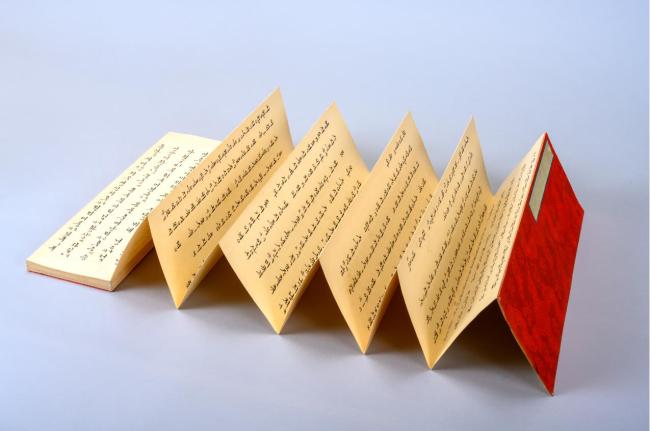A collection of 68 writings by Princess Deokon (1822-1844), the last legitimate princess of the Joseon Kingdom (1392-1897), and her family has returned home.
The National Hangeul Museum and Culture Heritage Administration recently announced the acquisition of the collection, citing that it has great value as an example of court writings in Hangeul, the Korean alphabet.
According to officials, the Overseas Korean Cultural Heritage Foundation, a subsidiary of the CHA, purchased the collection from a descendant of the princess living in the US in November.
 |
A collection of 68 calligraphies, books and letters written by Princess Deokon and her family have been returned to Korea. The collection was transferred to the National Hangeul Museum.(Yonhap) |
The NHM, located in front of the National Museum of Korea in central Seoul, will hold a special exhibition on the writings of Princess Deokon from April 25 to Sept. 1, along with other Hangeul examples. The museum currently owns around 400 pieces of writing by the princess and her family, including her royal mother Queen Sunwon.
For pieces that cannot be displayed with the collection, the museum is to make a sourcebook in November with modern translations and explanations.
The museum hopes that the Hangeul culture of Joseon’s royal family can be spotlighted through the exhibition and the sourcebook.
Born the third daughter of King Sunjo (1790-1834), Princess Deokon is the last lawful daughter of both the king and queen. Another famed princess, Princess Deokhye (1912-1989) was a king’s daughter by a concubine, and was born after Joseon had fallen.
Princess Deokon married Yun Eui-seon and adopted Yoon Yong-gu (1853-1939), who later had a child named Yun Baek-young (1888-1986).
The collection of 68 pieces of writing, including a book and letters by the princess and her family across three generations, are all written in Hangeul. Though a high-ranking family, they used Hangeul, showing how the alphabet was widely used at the time, regardless of rank.
“Hangeul is usually thought to have been used by low-ranking people, separated from the upper class. These writings show Hangeul culture with dignity,” National Hangeul Museum Director Park Young-goog said.
Among the returned writing is the princess’s translation of “Jagyeongjeonki,” which was originally written by her father King Sunjo in Chinese characters.
 |
Princess Deokon’s translation of “Jagyeongjeonki” (Culture Heritage Administration) |
Jagyeongjeon was a residence built by King Jeongjo for his mother. The king’s son, King Sunjo wrote about the stories behind the residence, praising his father’s love for his mother. The affix “-ki” refers to “story” in Chinese characters.
Queen Sunwon, the wife of King Sunjo, had her daughter Princess Deokon translate the book in Hangeul, wanting her to learn about the importance of filial piety.
Another work is the princess’s translation of a book titled “Gyuhun” in Hangeul. The book discusses the importance of virtue and manners that a woman should uphold.
Unlike previously discovered works, which were scripted by her servants or clerks, the two translated books were written by the princess herself in beautiful handwriting.
Some of the works were written by Yun Baek-young, the princess’s granddaughter. She was the first person to have her Hangeul calligraphy accepted for an art exhibition during Japan’s occupation of the Korean Peninsula.
Korean linguist Lee Jong-deok said the writings hold great historical meaning as they were a collection from a family, not individual pieces. The collection also provides perspective on the personal lives of royal figures, Lee added.
Some of the collections show letters scripted by a person called “Clerk Lee.” She was originally a court lady who served a queen. She left the palace for marriage, but the queen brought her in again, praising her handwriting. As a married woman can no longer be a court lady, Lee was hired as a clerk.
According to Yun Baek-young, Lee was a master of calligraphy and the best in the court at writing in Hangeul.
By Im Eun-byel (
silverstar@heraldcorp.com)








![[Weekender] Korea's traditional sauce culture gains global recognition](http://res.heraldm.com/phpwas/restmb_idxmake.php?idx=644&simg=/content/image/2024/11/21/20241121050153_0.jpg)
